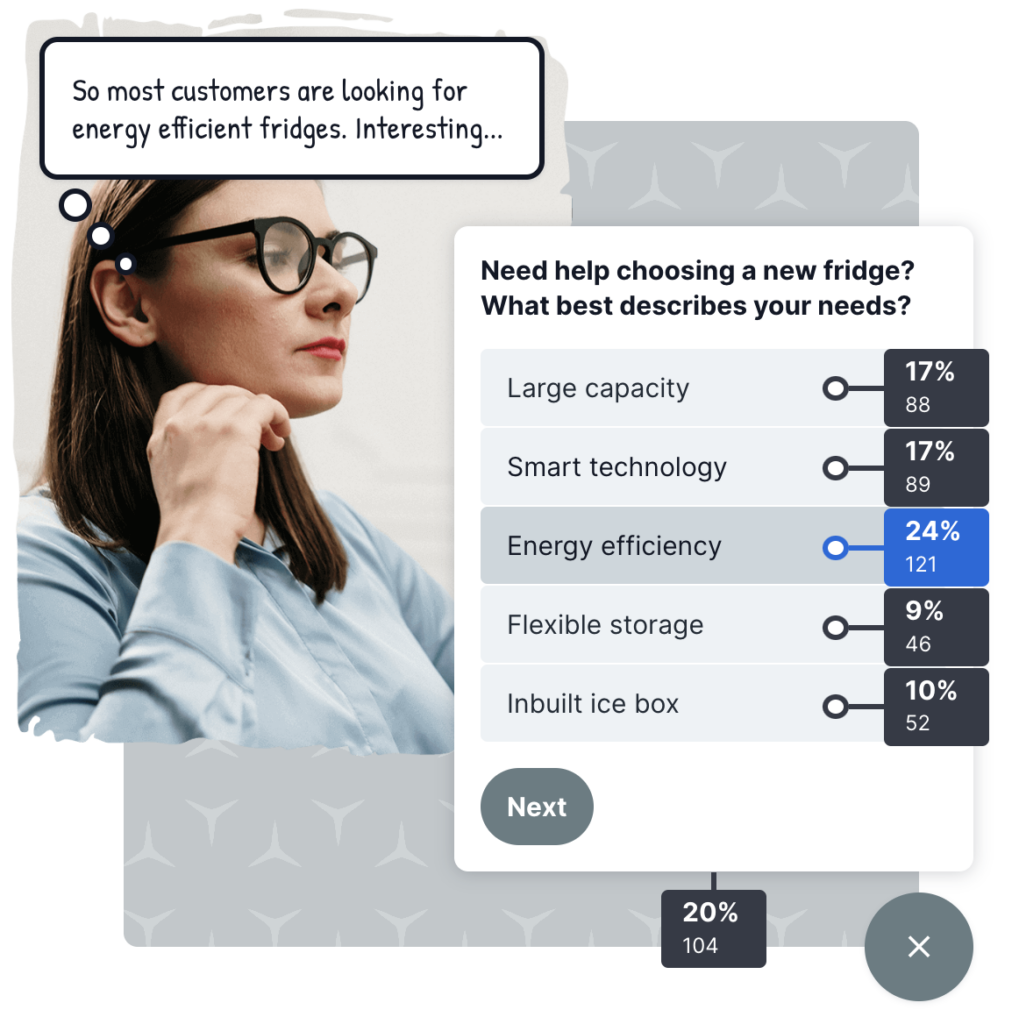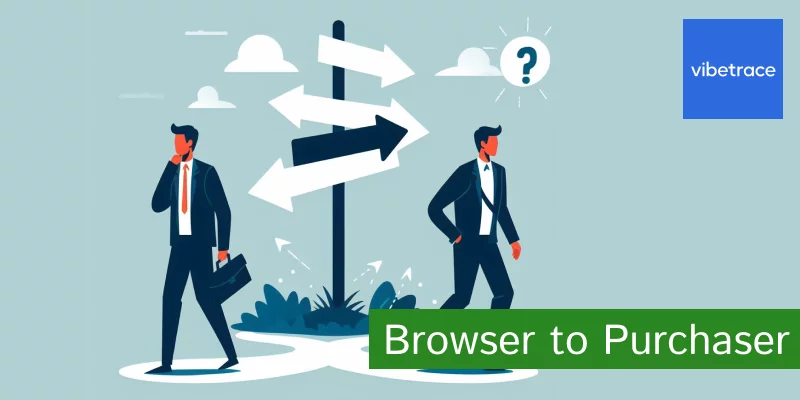When a consumer is about to make a purchase on a site, 43% checked if the item is available on Amazon and then purchased it there instead.
The results also indicated that 44% checked if the item is available on a competitor’s online store and then purchased it there instead.
What’s more, 34% of respondents said that they did not buy the product on the original site they were searching for the product on.
It’s clear that even if you have worked to navigate your visitor from their awareness phase to shopper to getting to the point of buying a product from your site, there is still a high point of failure for brands right at the end of the tunnel.
In fact, according to Littledata, where the average add-to-cart rate was 5%, as little as two out of three don’t buy with the average checkout completion rate was 49.8% and a low of 32%.
Why? Well for starters, the survey results speak for themselves:
Which of the following would give you the confidence to buy a product from an online store?
- 49% say reputable brand experience.
- 37% need more detailed product specifications.
- 21% want the ability to get recommendations on the site.
- 19% want ability to get advice and guidance on the site.
What makes you purchase an item elsewhere, rather than the original online store you visit?
- 65% got it cheaper.
- 50% want to get free or faster delivery.
- 22% want to get it from a brand that I trust or recognise from in-store shopping.
- 14% say the other online store is easier to use.
But in short, it is an issue of confidence. Not only in your brand, but in the purchase they are making, the price, the product itself and judging how high the cost of getting it wrong will be.
Research has shown that there is a great point of failure for brands who don’t manage to inspire this confidence where researchers might be easily swayed to make the same purchase elsewhere.
At this point of failure, the researcher is weighing up the cost of making the wrong decision and the consequences of this. Whether that be the monetary cost of choosing the wrong washing machine vs white t-shirt, or the convenience cost of returning and incorrect product.
Consumer confidence is four-pronged approach
In an overly saturated market where it is likely that Amazon has the same products as you with the added benefit of prime, the point of failure is very easy to get stuck in. When weighing up the cost of getting it wrong, the researcher is looking for confidence in the following:
- Price – They want to know they are getting value for money and paying a competitive price. If you can show this before they leave your ecosystem, you give them a reason to stay on your site.
- Product – They want to know this product will solve the problem that they have identified and that it is better than any substitution. Does your product description give a good enough experience or understanding of the product? Customers want guidance and advice on the site.
- Brand – The brand experience both at an affinity level and the online user experience needs to inspire confidence, not create friction. Is the online journey created with information they need to make a choice?
- Convenience – Researchers need confidence that they product will get to them in the most efficient and cost-effective way and the reassurance that the returns policy is easy.
Assuming you are already competing on price and delivery, there is a job to be done to give the buyer the confidence in your brand at the point of check out.
It might be a piece of onsite tech that fires reviews and recommendations both from your previous buyers but also third-party review sites.
What now?
With the average ecommerce conversion rate of about 1.5% to 2%, the widely held belief and status quo is that the 98% on your site who did not buy are lost sales. We decided to question that status quo with a simple objective of wanting to help brands see the researchers amongst the 98%.
That is why we set out to research this problem – to identify and quantity those who are on your site ready to buy, who don’t because they lack the confidence to. In short, turning researchers into purchasers.
So, the question shouldn’t just be about driving traffic to boost conversion rates, the question then becomes about how you are turning researchers into purchasers.
What are you doing to give customers the confidence in your price, product, brand, and convenience when there are in their late-stage research?
What is an Ecommerce Researcher
Research revealed that 60% of consumers are leaving your site when about to make a purchase, to find and purchase the same product on Amazon and/ or competitors. Amongst other things, it revealed the missed sales opportunity for retailers lies in the research phase.
What’s more the research showed that 14% of consumers surveyed visit an ecommerce store everyday with no intention to buy while 43% do this once to twice a week.
The burning question here is are you tracking researchers who are likely to buy on your site? Do you know what they look like in comparison to general website visitors with no intention to buy?
Shoppers would likely define themselves as researchers until the moment they click checkout on their online shopping cart. For the ecommerce marketer though, the definition of what a researcher is needs to be slightly more specific.
That’s why we have created a new eBook, looking into defining what researchers are, how they behave and what you can do to turn them into purchasers. But we thought we would give you a sneak peek. Here is our breakdown of what is an ecommerce researcher.
Tracking a researcher’s journey
A buyer will go through a three-stage process before making their purchase.
A visitor lands on your site in a stage of awareness. They are experiencing a problem or symptoms of pain, and their goal is to alleviate it. They may have landed on your site to get some more information to define their problem.
A visitor becomes a shopper in the consideration and evaluation stage. The shopper will have clearly defined and given a name to their problem, and they are committed to researching and understanding all the available approaches. They might use your site to go through all the products that helps them solve their problem.
A shopper becomes a buyer in the decision phase. The buyer has decided on their solution strategy, method, or approach. In your case they might have decided on a product. Their goal now is to compile a list of available products, make a shortlist, and ultimately make a final purchase decision.
During each stage of the buyer’s journey, shoppers employ two different modes of thought: exploration and evaluation. Google calls this researching phase the “messy middle”. The messy middle is “a space of abundant information and unlimited choice that shoppers have learned to manage using a range of cognitive shortcuts”.
First, the buyer will explore their options, expand their knowledge, and build a list of products to consider. Then they will evaluate their options and narrow down the number of choices. We can see this in the research – they exhibit a particular body language when going through this process.
Shoppers will often move back and forth, repeating this cycle as many times as needed to decide on a product.
What is important for the ecommerce marketer here is that the visitor, and in some instances the shopper, are early-stage researchers with a low propensity or likelihood to buy. They are less likely to buy, regardless of your promo codes and discounts. However, they still value the help and guidance you would get in-store, or reading reviews of a product.
The shoppers and buyers in the consideration and decision phases are late-stage researchers with a high propensity or likelihood to buy. They would be interested in your promo codes or delivery information as this is the decision-making information they need to go from researcher to purchaser.
What is a late-stage researcher?
A late-stage researcher is a term used to describe a buyer in the latter stage of their research and the decision stage of the buyer’s journey.
The late-stage researcher has a well-defined problem and a clear understanding of their preferred solution. With a product category chosen, the late-stage researcher begins exploring their options, scanning lists of available products, and deciding which may be worthy of further consideration.
Items of interest are flagged or saved but not considered in detail at this time.

Our research has shown that shoppers use the baskets (37%) and wish lists (23%) to do this. Note that this indicates shoppers are using baskets to save items on interest, not necessarily to show intent of buying.
Knowing the stage of researchers is critical. Not only to protect your bottom line by not handing out discounts to visitors who don’t want them, but also to improve their experience on your site and confidence that you are the brand to make the purchase with.
The early-stage researcher will be frustrated by a pop up with a promo code at the wrong time, use your site to do some research but ultimately purchase the product from a site that gave them a better experience. You don’t want your onsite guidance creating too much friction thus making your site a steppingstone.”
Nicholas Roberts, Director of Demand Generation
Navigating the digital body of a researcher
Being able to categorise and recognise the late-stage researchers amongst those still navigating the awareness phase is the next step.
A researcher (visitor or shopper) will give off different signals and real-time digital cues give you the opportunity to start understanding each interaction. These are the micro-actions that show what they are looking for.
Our research has shown that buyers do the following when researching big-ticket items:
- 52% Compare product descriptions online
- 21% Ask a friend or family member with experience of the product
- 20% Go in-store to find out more
- 6% Use the chat facilities on the website (More on this later)
You might not be able to track and measure a researcher asking their friends and family or going in-store for more information, but there are ways to track the most common behaviour – comparing product descriptions.
Like a shop assistant would navigate non-verbal body language cues, your onsite technology and analytics needs to interpret the digital body language.
That might look like the following:
- Exit intentions across your site.
- Multiple stops on one or more product pages.
- Navigating to reviews.
- Saving items to wish lists and baskets.
Start with their goal in mind, then start to think about the type of behaviour that would exhibit on your site. Finally, work out how you are going to track it.
Product comparison is a critical activity and a necessary step in the buying process, relying on finding consistent information between products and determining the differences between them.
This is where the cost of getting it wrong and confidence in the brand, price and product will create the greatest point of failure for any brand.

